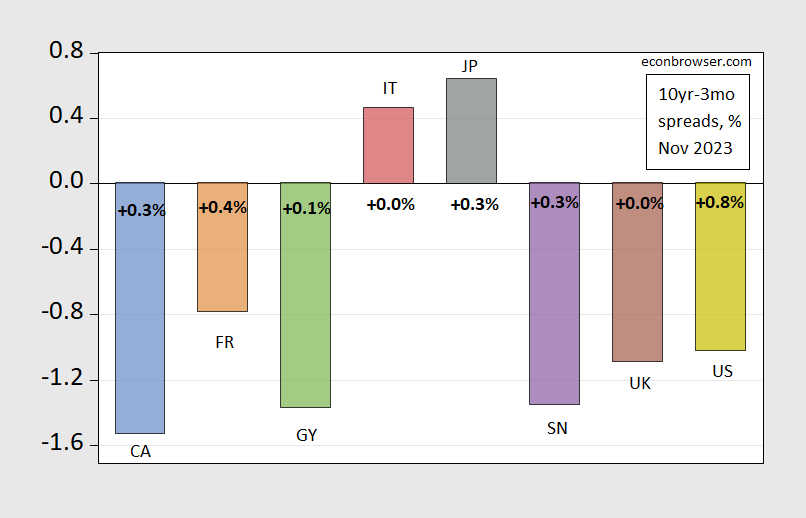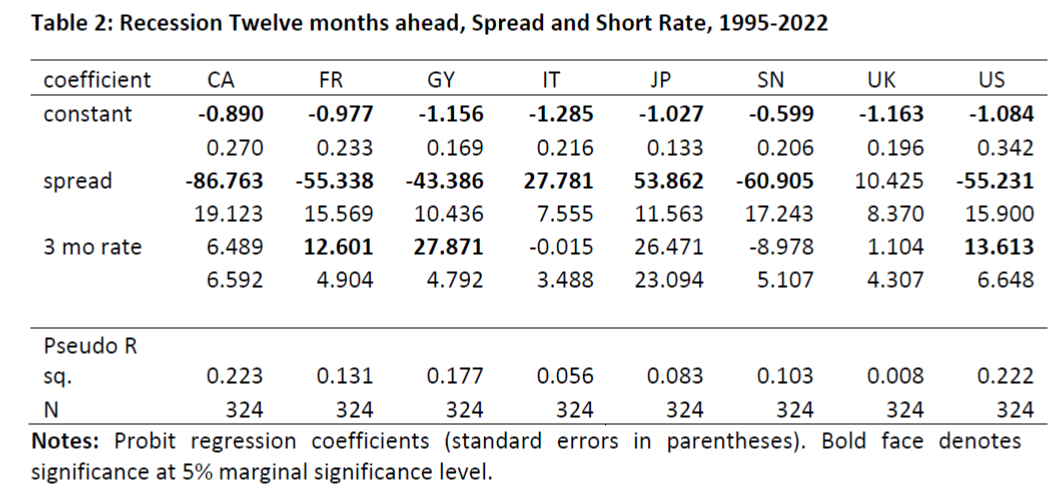A year ago, Laurent Ferrara and I documented the explanatory power of the term spread for recessions across countries. Here’re the 10yr-3mo spreads in November 2023, and Q/Q GDP growth rates for 2024Q3.
Figure 1: 10 year-3 month term spreads in November 2023, %. Numbers indicate q/q GDP growth in 2024Q3. Source: OECD, MEI via FRED, and TradingEconomics.com.
In Chinn and Ferrara (2024), we reported the following results for the prediction of recessions as defined by ECRI (except using NBER for the US).
Source: Chinn and Ferrara (2024).
On the basis of the pseudo-R2, one might have expected good predictions for Canada, Germany, and the US, while the spreads would have not had much predictive power for Italy and Japan.
Indeed, recent commentary has suggested recession has indeed come to Germany, maybe to Canada. While GDP is not the standard for defining recessions (either for NBER or ECRI), they can summarize some information regarding the pace of economic activity. While Q3 growth was relatively wrong in France, the outlook for Q4 is grimmer.
For the United States, growth in Q3 was a strong +0.8% q/q (3.1% q/q AR), despite the inverted yield curve. And the UK, for which the spread seemed particularly useless for predicting recessions (debt-service ratio and a financial conditions index are better), is a good candidate for being in recession now.


